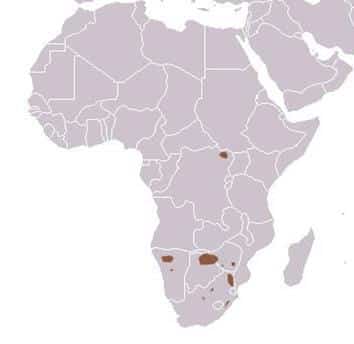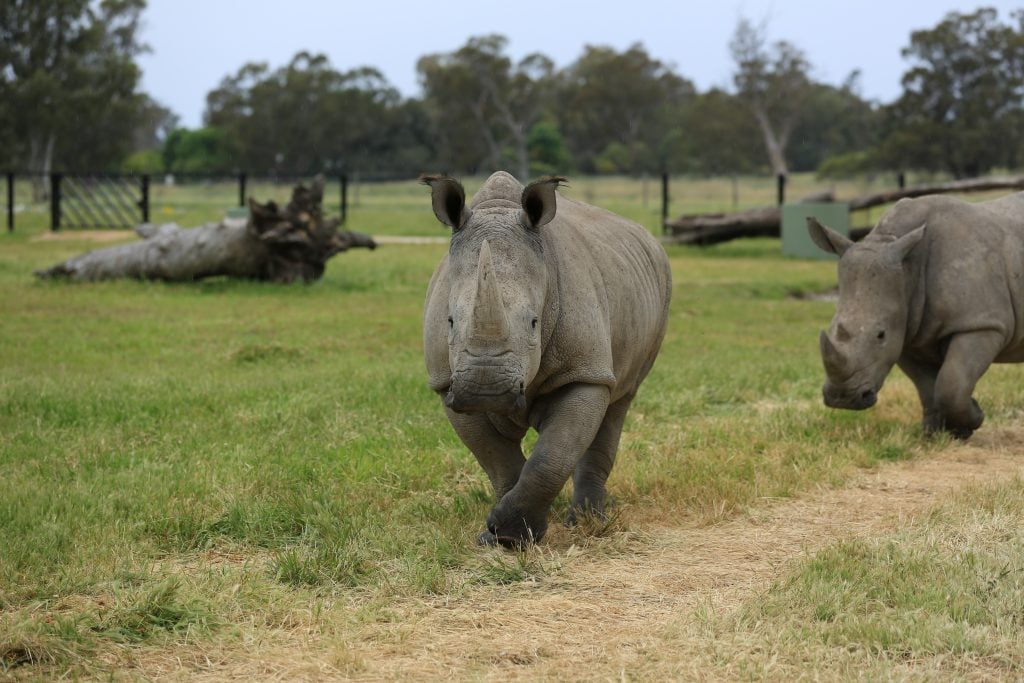Southern White Rhino (Ceratotherium simum)
Habitat:
White Rhinoceros can be found in tropical and subtropical grasslands, savannas an shrub lands in Botswana (re-introduced), Kenya (introduced, Namibia (re-introduced), South Africa, Swaziland (re-introduced), Zambia (introduced), Zimbabwe (re-introduced).
Description:
White Rhinos skin varies in shades of grey. Males can weigh from 1.8 - 2.5 Tonne with females being slightly lighter between 1.8 - 2 Tonne. They stand between 1.5 - 1.8m at the shoulder with a body length of 3.5 - 4m. They have a huge body, large head and broad chest. White Rhino have short, stocky legs with thee toes on each foot and a large hump on the back of the neck. They have two horns on the end of their nose with the front horn usually much larger than the inner horn and a square lip ideal for grazing.
Status:
Near Threatened
Interesting facts:
- Rhinos have been around for over 50 million years.
- There is actually no difference in the skin colour between black and white Rhino, despite their names. The white component of the name may have resulted from a mistranslation of the Afrikaans word ‘weit’ meaning ‘wide’.
- White Rhinos are surprisingly agile and can run up to speeds of 40km/h for short periods of time.
- They have pour eye sight but an acute sense of hearing and smell.
- The olfactory passages, that are responsible for the sense of smell, are larger than the Rhinos entire brain.
- Their skin is thick but sensitive to sunburn and insect bites, that’s why they like to wallow in mud.
- Rhino only have hair on their ears, tail tips and eyelashes.
- They communicate using a range of sounds from calf squeaking to snarling or wailing of adults.
- Diet: grasses and ground vegetation.
- They have adapted a square mouth with wide prehensile lips, enabling efficient grazing as a ‘mowing machine’.
- Reproduction: Females reach sexual maturity at 6-7 years of age, while males at 10- 12 years. Intervals between calving can range between 2 - 4 years with one calf being born.
- The calf will weigh between 40 - 65kgs and will stand within one hour. It will begin to graze at 2 months of age and stays with its mother for approximately 3 years.
- Gestation: Approximately 15 - 16 months.
- Predators: Humans
- Poaching continues due to demand from Asian Markets for Rhino horn as a cure for a variety of ailments, as prices for Rhino horn increase, so do Rhino deaths.
- Lifespan: up to 50 years.








